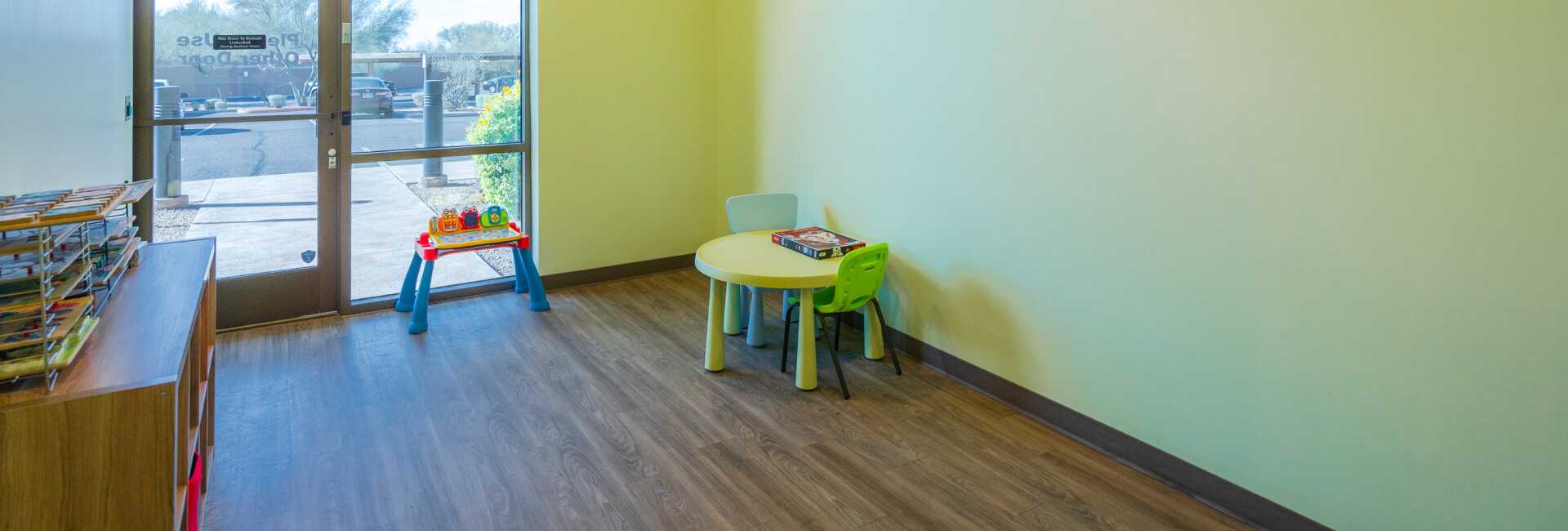Scottsdale Children’s Institute Versus Traditional Scottsdale Preschools
Picture this: You walk into your son or daughter’s preschool classroom to observe. You see him or her smile here and there, approach a friend or be approached by a friend once or twice, you see a worksheet being given out and a couple questions being asked. But you wonder, is she making friends? Is his language developing? Is she understanding her worksheet? Is he progressing? How much does she talk on any given day? Has he learned any new words? What if we told you that you could have exact answers to these questions. Unlike traditional Scottsdale preschools, our unique program at SCI (which is based off of the CABAS® model) you can get such answers to these important questions about your child’s developmental progress. (Lamm & Greer, 1991; Greer, Keohane, & Healy, 2002; Selinske, Greer, & Lodhi, 1991; Singer-Dudek, Speckman, & Nuzzollo, 2010).
How is SCI’s program different from traditional Scottsdale preschools?
Our specialized evidence-based methods of teaching, our language-focused environment, our highly trained staff, and our moment-to-moment data analysis techniques allow us to provide you with an accurate, concise and ongoing report of your child’s progress. The following are just a few reasons why our program is so different from traditional preschools:
Inclusive yet Individualized
At SCI, our model is implemented such that it is inclusive, meaning that students with different academic, social, and communicative needs are placed together in the same classroom. We believe that inclusivity teaches tolerance of others who are unlike ourselves, an important perspective for present day children to embrace. At the same time, inclusivity allows for students to share their varying skills with each other and act as peer models for one another. Although students with different skill-sets are placed in the same classroom together, we do try to match their skill levels as best as possible across classrooms.
The ability to individualize instruction is an important factor that makes inclusivity successful. As an inclusive teacher with a group of students that present with a range of skills and deficits, having the ability to meet the different needs of each child is imperative. As such, emphasis is placed on the individualization of education within our inclusive settings. Most preschools use the same predetermined curriculum for all students, that is, if any curriculum is being used at all. At SCI, we evaluate each student’s missing prerequisite skills and ensure that they are acquiring each fundamental cornerstone they need to be successful along the way. If one student is having trouble learning a skill in the same way as his or her peers, our teachers will implement a tactic or will get creative with new ways to help that child understand the task at hand.
*It is important to note that we do have a self-contained environment available for students who do not yet possess the prerequisite skills necessary to benefit from an inclusive preschool setting.
Student-to-staff ratios
Although individualization is ideal, it would not be possible without specific student-to-staff ratios within the classroom. As such, our inclusive classrooms based off of the CABAS® Model include a lower student-to-staff ratio, usually comprised of one Lead Teacher and two Assistant Teachers for as little as eight and no more than twelve students. In our self-contained classroom where students require more attention and support, we often have as many as 3-4 Assistant Teachers providing support to the Lead Teacher for a total of six students. These specialized classroom ratios allow us to provide the most individually catered education to the greatest number of students without compromising any one student’s educational experience.
Staff Training
Our staff are mentored by highly experienced and trained professionals at the administrative level. Our classrooms at SCI are supervised by two doctoral level board certified behavior analysts who are also certified birth-2 and K-12 teachers with many years of experience teaching classrooms of their own. Our staff undergo rigorous training sessions before they are even able to deliver instructions of any type within the classroom. Our staff are not only expected to excel in their teaching but are also expected to know, use, and implement the principles of applied behavior analysis (ABA). Our staff comprise a healthy mix of individuals who have either formal education in teaching young children, formal education in ABA, or both!
After the initial training period is over, our staff continue to receive weekly training sessions to ensure that the skills they acquired are being maintained and to enable them to continue to learn new things. Our experienced trainers use a variety of different evidence-based training methods such as Behavioral Skills Training (Sarokoff & Sturmey, 2004) and the use of observational feedback scales called Teacher Percent Rate and Accuracy (TPRA) scales (Ross, Singer-Dudek, & Greer, 2005). We provide our staff with frequent, objective, and systematic feedback that allows them to both learn from their mistakes and to be acknowledged when they are successful. Our teachers love to see their students progress, it is what they find most reinforcing about their jobs!
Specialized Data Collection and Data Monitoring System
One of the most fundamental differences between our program based and a traditional Scottsdale preschool is our specialized system for data collection and monitoring. Our finite measurements allow us to monitor your child’s program with extreme precision. We take data on every student response every day. When your child is given an instruction that is an academic, social, or communicative goal for him or her, our staff will record whether the response emitted was correct or incorrect. If the response was correct, our staff will provide your child with positive. If the response was incorrect, our staff will provide your child with a model of how to correctly complete the task and then provide them with another opportunity to respond. This procedure allows for optimum learning within the classroom.
Once our data is collected on any given program, it is graphed and monitored using a decision protocol. This decision protocol allows us to make decisions about whether our teaching methods are working or not. If we see an increasing trend in the student’s data, we will continue teaching the skill in the same manner that we have been. However, if we see a stable or decreasing trend, we will stop our current teaching methods and either try a new one, or implement a tactic using the current method that allows for additional support in learning the task.
We are also able to represent your child’s data in a variety of different ways which ensures that the most accurate representation of their progress is being presented to you. Our staff will meet with you, the parent(s), upon request at any time to review your child’s progress with you. We believe that communication and transparency regarding your child’s objective data is the key to providing your child the best chance at succeeding.
Focus on Language Development and Skill Acquisition
Our program practices the verbal behavior development theory (Greer & Speckman, 2009) meaning that we place high importance on language and communication skill development. Traditional Scottsdale preschools take the approach that language development will happen no matter what, however for many children, this is not always the case. Some children need a little more support and for those who don’t, consider it an added bonus. Basic listener and speaker repertoires are foundational to the development of more higher order skills that are required to be successful in the classroom and beyond.
The hierarchy of listener and speaker behaviors that we target with our students is specifically designed to allow a learner to progress toward a fully functioning communicative vocabulary without missing any of the basic skills that are necessary along the way. Without an in-depth understanding of the way children’s language develops, an educator is not able to recognize red flags that may arise. Our staff is specifically trained to not only understand and recognize these red flags, but to implement remedial techniques to induce these missing skills when necessary.
Embracing the Individuality in Every Child
The components listed above are only some of the features that set us apart from other traditional preschools yet represent the most important and unique features of our model at SCI. We can say with confidence that our staff, student-to-staff ratios, facility, teaching techniques, and data collection systems excel in comparison to those of other programs in Scottsdale.
We are proud to say that decades of research findings have proven that the evidence-based procedures, theories, and models that we use here at SCI have been highly successful for a vast number of students in the past. Our love of children is what drives our motivation to help them succeed and we are committed to that goal. We cannot technically guarantee that your child with thrive, but what we can say is that we will continue to change the way we teach to fit your child’s needs until we find something that works. Rather than trying to fit the entire classroom into one box, we recognize and embrace that each student learns differently. We take education very seriously, but we still know how to have fun!
Kieva Hranchuk, PhD, BCBA-D, LBA





